- 27 September 2021
- 1645 defa okundu.
ZHA ranks first in design competition to renovate Vilnius railway station
The evaluation commission of the international architectural competition to select the best concepts for the redevelopment of the Vilnius railway station complex and surrounding area awarded the highest ranking to the proposal by Zaha Hadid Architects.
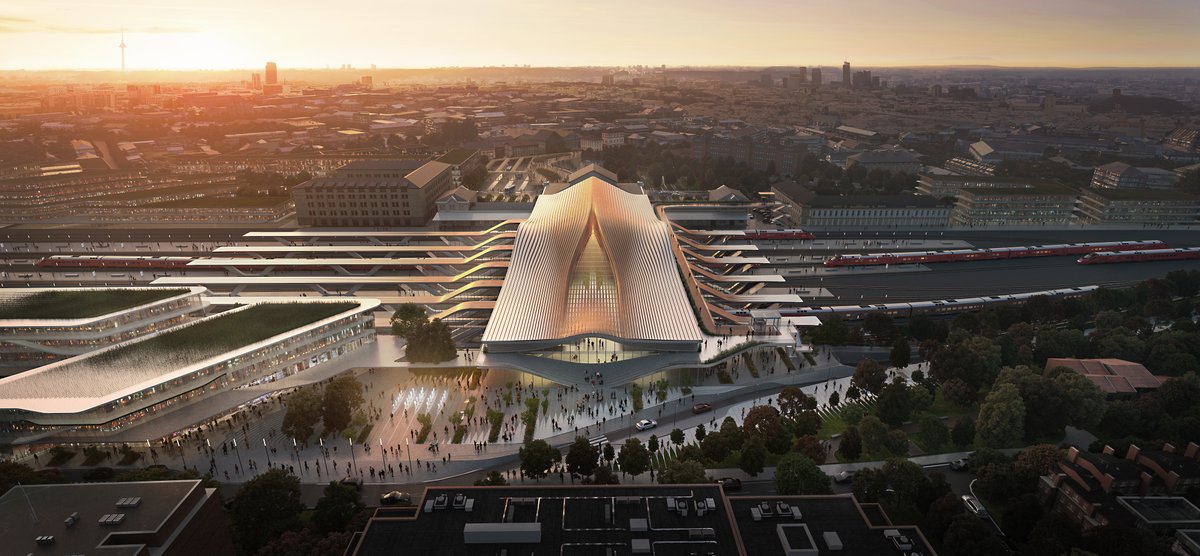
Zaha Hadid Architects’ ‘Green Connect’ proposal creates an integrated transportation hub for the 21st century with new civic spaces enveloped by nature.
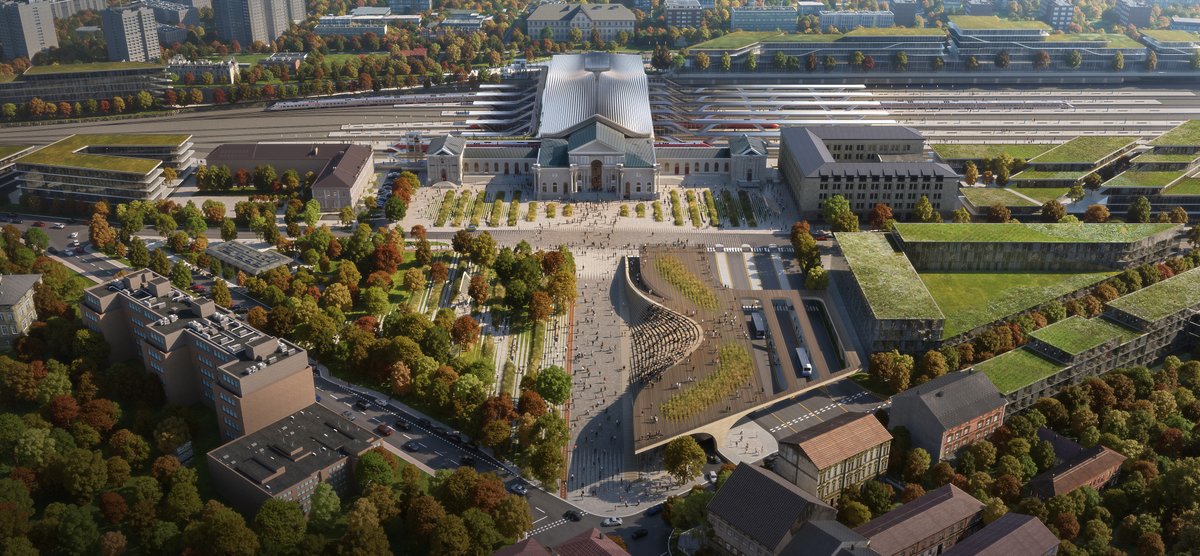
Gianluca Racana, Zaha Hadid Architects’ Director said, “It is an honour to be awarded highest ranking in this competition for such a strategically important site for Vilnius. ‘Green Connect’ will be a future-proof transport hub designed with the passenger experience in mind. Providing a wealth of new public space, our proposals transform the site into a destination not only for those using the transportation hub but also for the city of Vilnius and the local community.”
Integral to the city’s ongoing sustainability agenda that prioritizes pedestrians and cyclists, Zaha Hadid Architects’ proposal to upgrade Vilnius railway station incorporates a new public bridge over the railway tracks that connects the Naujininkai district to the south with the city centre and Vilnius old town; transforming the existing rail infrastructure from being a barrier that divides the city into a connector that unites Vilnius and serves as a transport hub for national and local rail services in addition to the new Rail Baltic line that links with Europe’s high-speed network.
The renovation and reuse of the original station create a new 9,500 sq. m concourse bridge that is a contemporary reinterpretation informed by the existing heritage building.
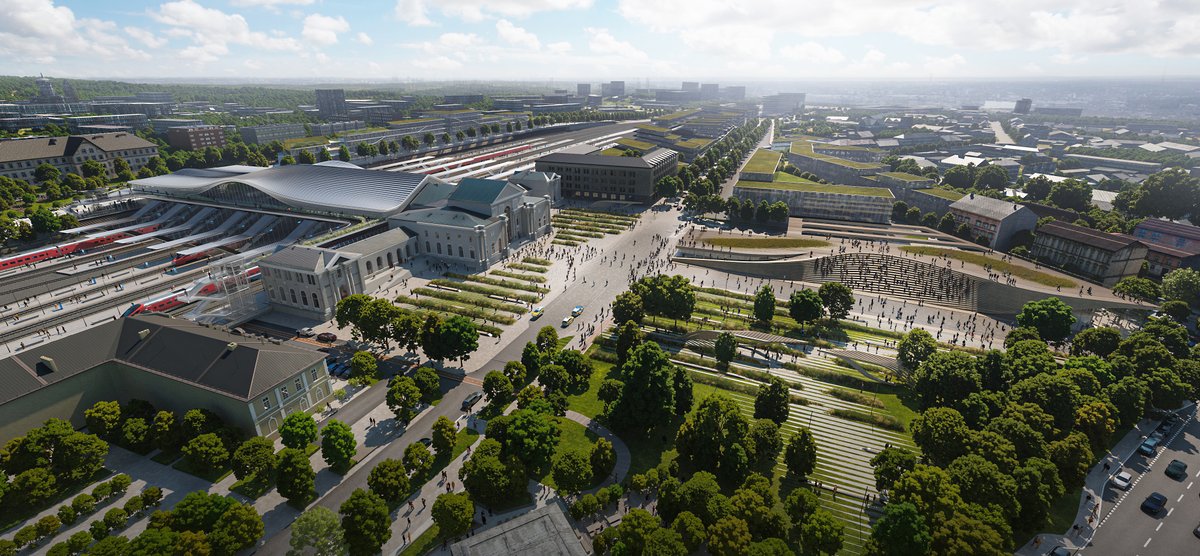
Removing the temporary kiosks and offices installed over recent decades, the clarity of the existing 9,000 sq. m station is restored and linked with a new public transport terminal for the city’s bus networks. Designed as an inhabited landscape within the upgraded Stoties Square park in front of the station, the terminal’s outdoor amphitheatre and ramp lead to a public terrace on its roof.
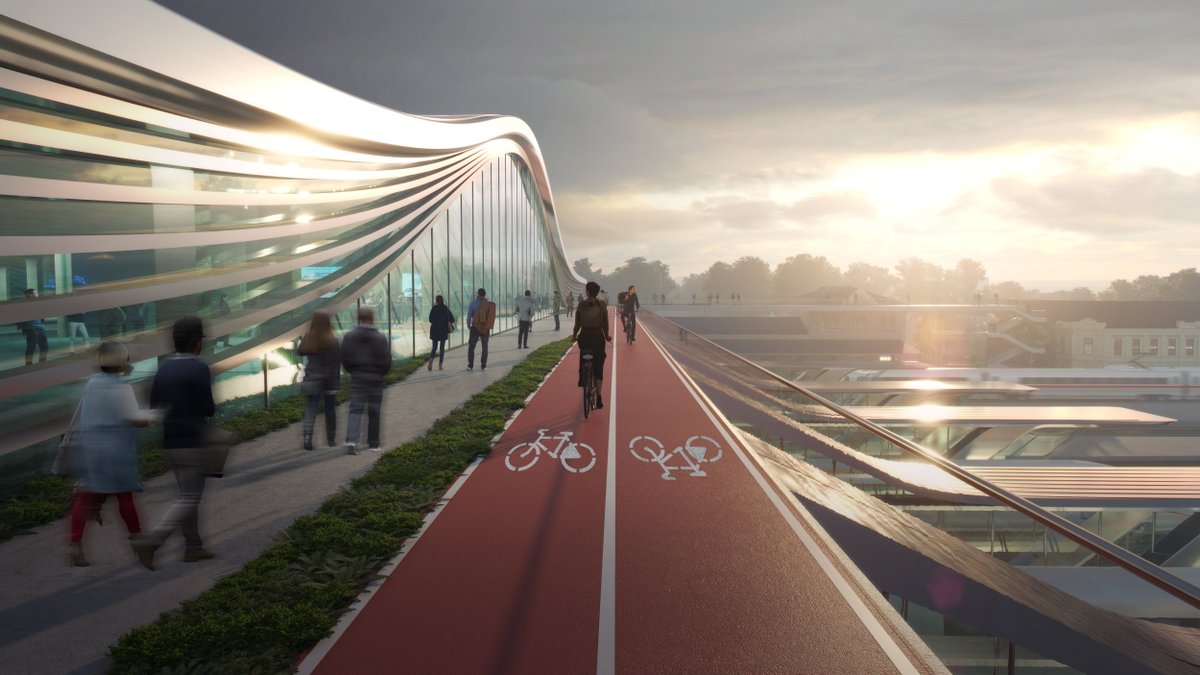
Relocating the existing car parking in Stoties Square to a new underground facility, the square and its adjacent park will become a vibrant civic space for the city with over 300 new trees and 4,000 sq. m of landscaping including the creation of tree-lined avenues along its main axes and water gardens for the natural collection, filtration and purification of rainwater.

The new concourse bridge is 46 metres wide and spans 150 meters across the railway platforms. Supported 10 metres above the tracks, the fluid forms of the bridge’s roof structure and the terraced landscape of the bus terminal are constructed in locally-sourced laminated timber that is lightweight, fire-resistant and incorporates low embodied carbon.
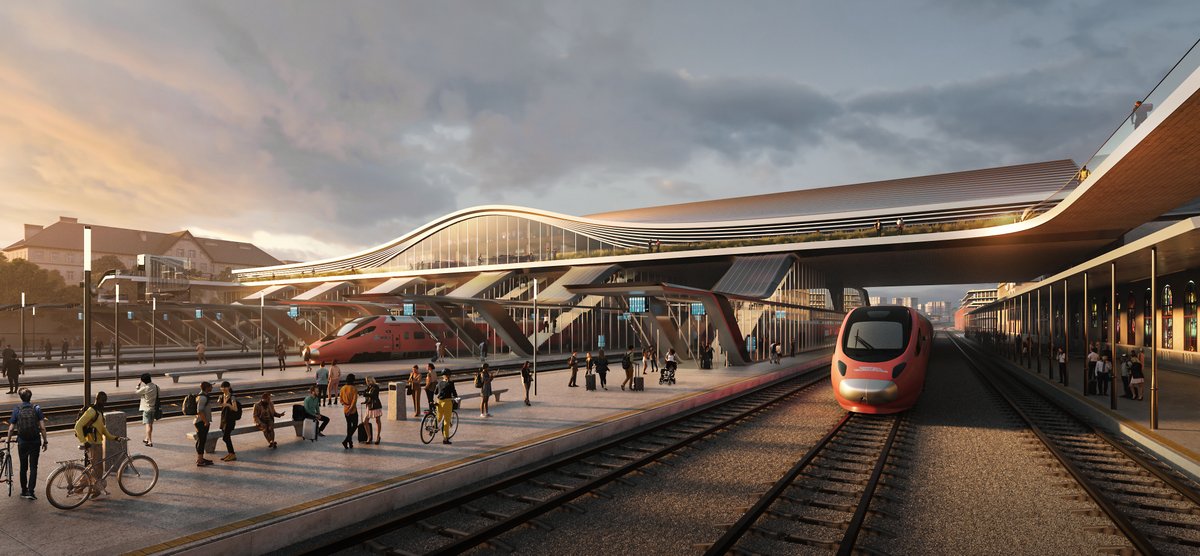
The composition of the station’s new bridge gradually transforms along its length; from the pitched roof defined by the existing neoclassical station’s triangular pediment into softer geometries and volumes that reduce in scale to land at Pelosos Street in the Naujininkai district. A linear skylight along the length of the bridge and glazed facades over the railway tracks provide natural light and intuitive navigation through the concourse.

Nature-based solutions are integral to the design. Green roofs, landscaping and planting will lower temperatures in summer and provide heat insulation in the winter. Creating an interconnected series of natural habitats within the city, these urban green spaces are easily accessible and can be enjoyed by communities throughout the year to enhance wellbeing and interaction.
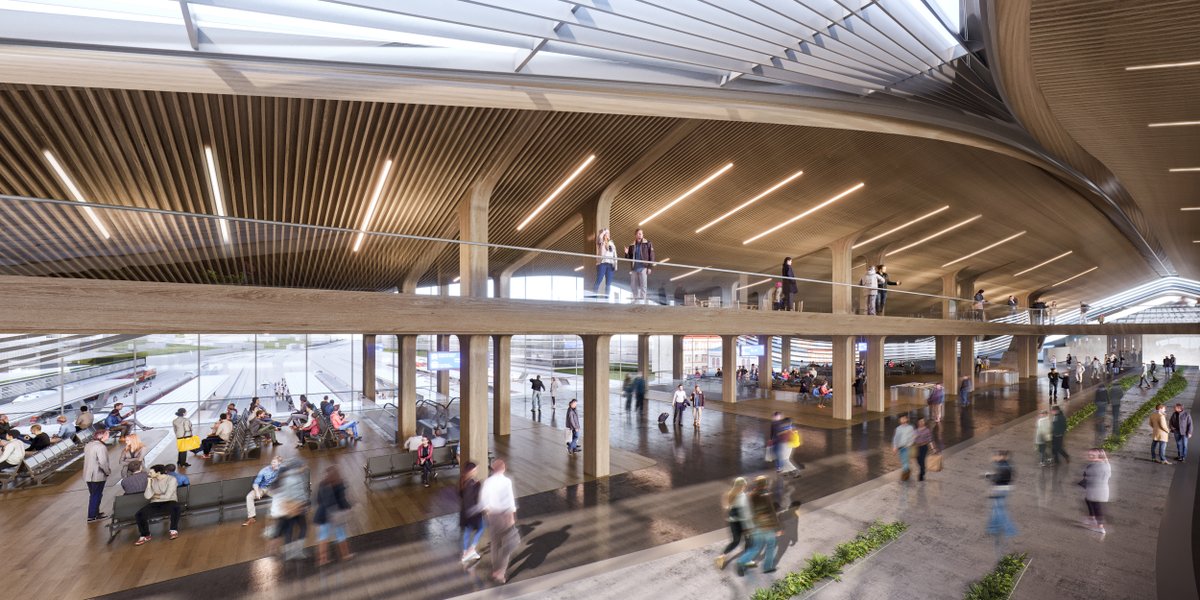
Zaha Hadid Architects’ design to renovate Vilnius Railway Station and surrounding areas also incorporate energy production technologies and depolluting strategies to improve air quality within its adjacent neighbourhoods.
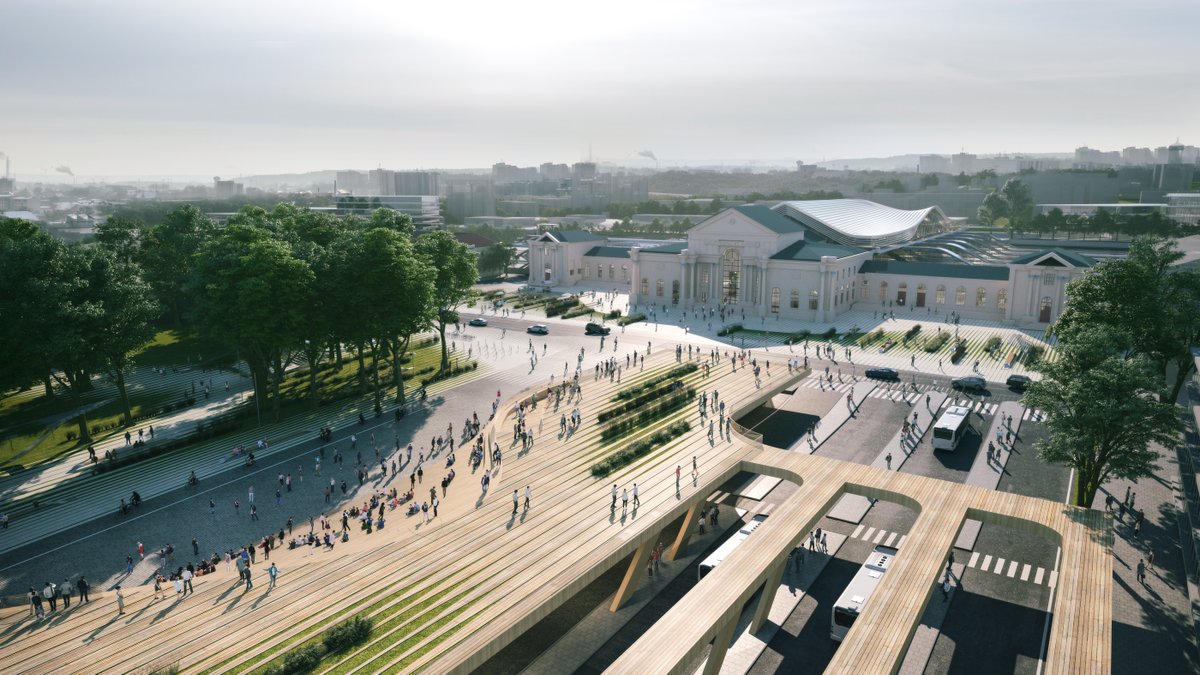
Annual solar radiation analysis has defined the facades to maximise sunlight within its interiors in winter and reduce glare in the summer. This analysis also determined the positioning of photovoltaic panels for optimum efficiency.

